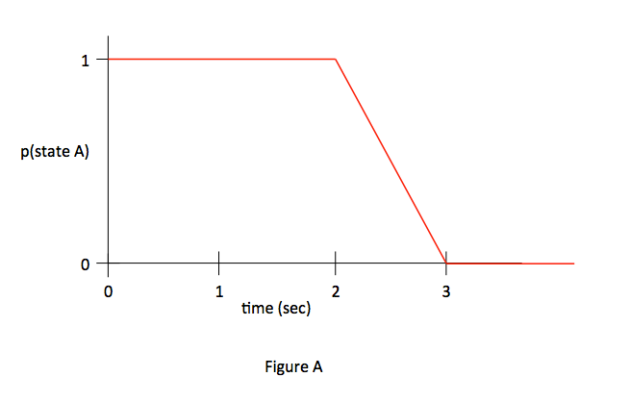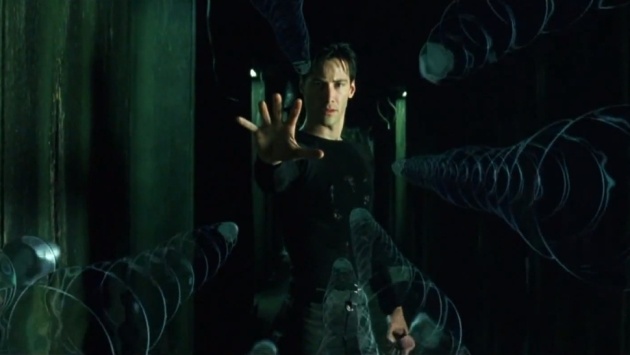New Hints to How our Reality is Created
March 10, 2017 11 Comments
There is something fascinating going on in the world, hidden deep beneath the noise of Trump, soccer matches, and Game of Thrones. It is an exploration into the nature of reality – what is making the world tick?
To cut to the chase, it appears that our reality is being dynamically generated based on an ultra-sophisticated algorithm that takes into account not just the usual cause/effect context (as materialists believe), and conscious observation and intent (as idealists believe), but also a complex array of reality configuration probabilities so as to be optimally efficient.
Wait, what?
This philosophical journey has its origins in the well-known double slit experiment, originally done by Thomas Young in 1801 to determine that light had wavelike properties. In 1961, the experiment was performed with electrons, which also showed wavelike properties. The experimental setup involved shooting electrons through a screen containing two thin vertical slits. The wave nature of the particles was manifested in the form of an interference pattern on a screen that was placed on the other side of the double slit screen. It was a curious result but confirmed quantum theory. In 1974, the experiment was performed one electron at a time, with the same resulting interference pattern, which showed that it was not the electrons that interfered with each other, but rather a probabilistic spatial distribution function that was followed by the pattern on the screen. Quantum theory predicted that if a detector was placed at each of the slits so as to determine which slit each electron would go through, the interference pattern would disappear and just leave two vertical lines, due to the quantum complementarity principle. This was difficult to create in the lab, but experiments in the 1980s confirmed expectations – that the “which way did the particle go” measurement killed the interference pattern. The mystery was that the mere act of observation seemed to change the results of the experiment.
So, at this point, people who were interested in how the universe works effectively split into two camps, representing two fundamental philosophies that set the foundation for thinking, analysis, hypothesis, and theorizing:
A zillion web pages can be found for each category.
The problem is that most scientists, and probably at least 99% of all outspoken science trolls believe in Materialism. And “believe” is the operative word. Because there is ZERO proof that Materialism is correct. Nor is there proof that Idealism is correct. So, “believe” is all that can be done. Although, as the massive amount of evidence leans in favor of Idealism, it is fair to say that those believers at least have the scientific method behind them, whereas materialists just have “well gosh, it sure seems like we live in a deterministic world.” What is interesting is that Materialism can be falsified, but I’m not sure that Idealism can be. The Materialist camp had plenty of theories to explain the paradox of the double slit experiments – alternative interpretations of quantum mechanics, local hidden variables, non-local hidden variables, a variety of loopholes, or simply the notion that the detector took energy from the particles and impacted the results of the experiment (as has been said, when you put a thermometer in a glass of water, you aren’t measuring the temperature of the water, you are measuring the temperature of the water with a thermometer in it.)
Over the years, the double-slit experiment has been progressively refined to the point where most of the materialistic arguments have been eliminated. For example, there is now the delayed choice quantum eraser experiment, which puts the “which way” detectors after the interference screen, making it impossible for the detector to physically interfere with the outcome of the experiment. And, one by one, all of the hidden variable possibilities and loopholes have been disproven. In 2015, several experiments were performed independently that closed all loopholes simultaneously with both photons and electrons. Since all of these various experimental tests over the years have shown that objective realism is false and non-local given the experimenters choices, the only other explanation could be what John Bell called Super-determinism, a universe completely devoid of free will, running like clockwork playing out a fully predetermined script of events. If true, this would bring about the extremely odd result that the universe is set up to ensure that the outcomes of these experiments imply the opposite to how the universe really works. But I digress…
The net result is that Materialism-based theories on reality are being chipped away experiment by experiment. Those that believe in Materialist dogma are finding themselves being painted into an ever-shrinking philosophical corner. But Idealism-based theories are huge with possibilities, very few of which have been falsified experimentally.
Physicist and fellow digital philosopher, Tom Campbell, has boldly suggested a number of double slit experiments that can probe the nature of reality a little deeper. Tom, like me, believes that consciousness plays a key role in the nature of and creation of our reality. So much so that he believes that the outcome of the double slit experiments is due strictly to the conscious observation of the which-way detector data. In other words, if no human (or “sufficiently conscious” entity) observes the data, the interference pattern should remain. Theoretically, one could save the data to a file, store the file on a disk, hide the disk in a box and the interference pattern would remain on the screen. Open the box a day later and the interference pattern should automatically disappear, effectively rewriting history with the knowledge of the paths of the particles. His ideas have incurred the wrath of the physics trolls, who are quick to point out that regardless of the fact that humans ever read the data, the interference pattern is gone if the detectors record the data. The data can be destroyed, or not even written to a permanent medium, and the interference pattern would be gone. If these claims are true, it does not prove Materialism at all. But it does infer something very interesting.
From this and many many other categories of evidence it is strongly likely that our reality is dynamically being generated. Quantum entanglement, quantum zeno effect, and the observer effect all look very much like artifacts of an efficient system that dynamically creates reality as needed. It is the “as needed” part of this assertion that is most interesting. I shall refer to that which creates reality as “the system.”
Entanglement happens because when a two-particle-generating event occurs, it is efficient to create two particles using the same instance of a finite state machine and, therefore, when it is needed to determine the properties of one, the properties of the other are automatically known, as detailed in my blog post on entanglement. The quantum zeno effect happens because it is more efficient to reset the probability function each time an observation is made, as detailed in my blog post on quantum zeno. And so what about the double slit mystery? To illuminate, see the diagram below.

If the physicists are right, reality comes into existence at point 4 in the diagram. Why would that be? The paths of the particles are apparently not needed for the experience of the conscious observer, but rather to satisfy the consistency of the experiment. The fact that the detector registers the data is enough to create the reality. Perhaps the system “realizes” that it is less efficient to leave hanging experiments all over the place until a human “opens the envelope” than it is to instantiate real electron paths despite the unlikely possibility of data deletion. Makes logical sense to me. But it also indicates a sophisticated awareness of all of the probabilities of how the reality can play out out vis a vis potential human interactions.
The system is really smart.


